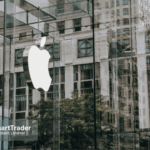📆 Wednesday, April 9
► European markets plunged on Wednesday as U.S. President Donald Trump’s sweeping tariffs take effect, including 104% China (EU 20%; UK 10%; 25% on autos & auto parts) came into effect, reigniting fears of a prolonged trade war and potential recession. The Stoxx 600 fell over 2.7%, led lower by pharma and energy stocks. Traders have fully priced in a European Central Bank rate cut next week. Major pharmaceutical players like Roche and Novo Nordisk sank over 5% after Trump floated tariffs on all pharma imports. Meanwhile, energy and mining stocks were hit hard as oil dropped to a four-year low and metals were dragged down by reduced Chinese demand. The EUR gained nearly 1% as the USD weakened, while haven flows lifted the CHF and JPY.
► U.S. stocks extended losses for a fifth session as the S&P 500 fell, bringing its total drop to more than 12% since Trump’s tariff plan was unveiled (-15.5% YTD). Tuesday’s equity rout was compounded by a sharp selloff in U.S. Treasuries, with the 30-year yield surging to its highest level since November 2023, raising concerns that investors are fleeing what was once considered a safe haven. Currently S&P 500 (0.0%) and Nasdaq (+0.4%) futures are trading near flat. Fears of a global recession intensified, with Goldman Sachs and JPMorgan raising the likelihood of a downturn. Investors are now questioning the Federal Reserve’s ability to respond effectively, especially with inflation risks on the rise. Meanwhile, Microsoft overtook Apple as the world’s most valuable public company, as Apple shares tumbled 23% in four days amid concerns over its supply chain exposure to heavily-tariffed countries (in particular Vietnam & China).
► Asian markets reversed Tuesday’s rebound and fell sharply on Wednesday. Japan’s Nikkei 225 dropped 3.78%, as U.S. tariffs on Japanese cars and goods took effect. The JPY appreciated to ~146/USD as investors fled to safety. Chinese markets were highly volatile after President Trump announced a 104% tariff on China. The Shanghai Composite initially fell but managed to recover, closing up 1% (!). China also signaled openness to dialogue with Washington and held off on an immediate response to the new levies—offering a glimmer of hope that helped Chinese shares erase earlier losses, even as investors stayed on edge. Hong Kong’s Hang Seng Index rose (!) 0.68%. Australia’s ASX 200 shed 1.8% as Trump targeted Australian beef exports, with the AUD rebounding slightly after hitting multi-year lows. Across the region, sentiment remained fragile as trade uncertainty clouded growth prospects and the IMF warned of potential spillover risks.
Subscribe to see more




